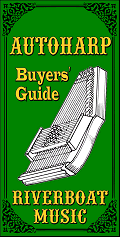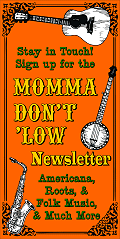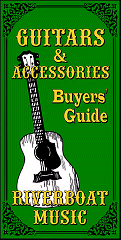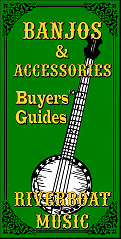
 Introduction to Zithers |
 |
| ||||||||||||||||||||||||||||||||||||||||||||||||||||||||||||||||||




|
Introduction to Zithers Editor's Note: I wrote this article because I've had a few reader questions about the classes of instruments described here. When my research led to conflicting information, I wound up purchasing several examples to make certain I could verify what I was writing about them. That said, I am a one-time fact-checker and history book author who loves studying unusual instruments, but I am not a zither player. f you know more than I about the subjects on this page (which wouldn't be that hard), please let me know what I should consider adding, subtracting, or modifying. We now return you to our regularly-scheduled article. The term "zither" comes from ancient Green and Latin words for stringed instruments, "cythara" being one spelling. In modern days, the term specifies any instrument on which the strings do not extend past the body of the instrument. More simply, the instrument lacks a "neck." Which is to say that academics might claim that autoharps, hammered dulcimers, bowed psalteries, and Appalachian dulcimers all fit into the category.
But today, when musicians and music historians say "zither," they're nearly always referring to certain classes of European instruments that emerged before the autoharp and evolved alongside it for the first half of the 20th century. To "newbies," many look rather like autoharps that have been robbed of their chord bars. But they nevertheless offer provision for playing chords, especially through the use of "chord clusters," several strings clustered together that would play a chord if you strummed them all at once. "Concert" Fretted Zither
The player would fret the fretboard with the left hand. Using a thumbpick and finger picks, he or she could play the melody with the thumb and pick out an accompaniment on the open strings with the fingers. At least one modern player plays mostly on the fretboard, fingerpicking as you might a classical guitar. I have bought a basket case version of one of these to mess around with but have not really restored it, much less learned to play it. So if you get one, I won't be much help. These instruments have a unique sweet sound that was later popularized in the US through the theme of Orson Welles' The Third Man. (They also gave the name to a rare class of banjo, the "zither banjo," because those instruments had a similar sweet sound.) Interest in this class of zither has been growing in recent years. If you google "How to play zither," almost all of the YouTube results will involve "concert zithers/" In addition, the Zither.us web site has resources including pdf scans of a instruction booklet, including soe of the few that are in English. If that link doesn't work for you, one of the easiest booklets is also downloadable here. "Guitar Zithers"Between the 1880s and the 1920s, a wide range of zither-type instruments were sold door to door in North America and Europe. Most offered preformed chord clusters and an octave or two worth of open strings for playing the melody.
One class of these instruments has retroactively been given the name "Guitar Zither," since that was the standard name in Europe. But in the American versions, there isn't a standard name for these. The names "Celeste" and "Pianola" sometimes come up, but those names are often used on other configurations as well. In my early research, I assumed that this was a "precursor" to the autoharp, since similar instruments had existed decades earlier. However, the first patent on this specific configuration was issued to Friederich Menzenhauer after the first patent on the autoharp. (A similar patent was issued a few years earlier, but still lagged the autoharp patent by a year or two.) If you think about it, the guitar zither was a direct competitor, back when most autoharps had only three or five chords. And it was a lot cheaper to build. Autoharps didn't "leave them in the dust" until they started going to eight chords (and then twelve). According to one source nearly half a million guitar zithers (and similar instruments) a year were made for several years in the early 1900s. The example shown above was sold by the Paramount manufacturing company in that era. While this was being made, the Otto Schmidt company (later called "Oscar Schmidt") was making their own version that had a handle and doubled the melody strings. Eventually Oscar Schmidt apparently took over the Paramount line and started manufacturing this exact zither under their own brand name. Other American manufacturers included Phonoharp, who also made Zimmerman/Dolge-branded autoharps for a time. The preformed chords on the Paramount zither are Bb, D, F, G, and C. The individual strings give you a chromatic scale in two octaves. The photo below shows the chord and note name label from the zither shown to the right. The black and red note names correspond with the white and black keys of the piano. You'll notice that Bb, Eb, and Ab are listed as A#, D#, and G#, a convention shared with autoharps of the same era. On this zither, the scale is chromatic. (Other brands, especially German-built zithers, may have semi-diatonic scales, perhaps including F# and C#.)
Menzenhauer's instruments were accompanied by "song sheets" that could be slid under the strings showing you which notes to play for a given tune. One patent for these was issued in Germany to Theodor Meinhold about 1891; the same year, another patent for similar song sheets was issued in the United States to James Dodd, so Meinhold never completely controlled that aspect of the zither market. To Meinhold, at least, the song sheets were a vital part of the guitar zither's features. In a sense, that made them easier to play than the autoharp, as long as you didn't mind being restricted to the tunes that the manufacturers provided. In the early ears, this may have given them a competitive edge over, say, the Zimmerman autoharp, which relied on a more complicated notation system. In fact, three-chord guitar zithers were sold with such song sheets in Germany as late as the 1970s. In addition to showing which note to play, the song sheets showed which chord to play by putting tiny numbers beside each note image. Between the two, you could get a very full sound. Several companies in Germany still publish song sheets like the one shown above, but it helps if you speak German when you go to order. You also need to know exactly which zither you have, etc. What About the Chords? The following illustrations are closeups of the note strip on the Paramount zither shown near the top of the page. Different zithers use different chords and different numbers of chords, so this is just an example. 
It would be possible to use a fingerpick on your left index finger to pick the chords and use a flatpick or fingerpicks on your right hand to pick the melody. Less common - as far as I can determine - you could use a thumb pick in your right hand to pick the chords. The pattern around the hole of Paramount-designed zithers was paper. So was the label inside. Many of the surviving models from this era have a warning that this instrument can only be purchased by being ordered by through a "special agent," "demonstrator," or some such (meaning door-to-door salesman). Picture this, in the late 1980s and early 1900s - an army of door-to-door salesmen, each of whom has learned to play two or three complex songs very well, convincing families who couldn't afford a piano or music lessons that members of the family could teach themselves to play and bring music to the home. And you could even buy them on installment plans. The truth is, they sound great when played properly by someone with skill, but they're difficult for non-musicians to get started on. Many were discarded; the few that have survived show signs of age and bad storage, but very few signs of heavy use. Yes, There Were Many Experiments - If you google "zither" today, you'll find a wide range of diverse instruments, some of which look entirely different from the zithers we're discussing here. And they really are almost all one kind of zither or another, using the "textbook" definition. But the "Guitar Zither," also known by several other names, is the kind that survived in the greatest numbers and was manufactured the longest (they're still being made in Germany). Our article "Autoharp Precursors and Competitors" describes several of the early competitors to this class of instrument. Rick Meyers' "Loopholes Blog" article "Guitar-zithers and Barless Autoharps" provides detailed information on the early days of this instrument. German "Guitar Zithers" Back when Paramount and Oscar Schmidt were building the instrument shown above, the Hopf family, then ensconced in Bavaria was busy making zithers and autoharps.
The zither to the right is typical of the instruments they made right up until the East Germans nationalized the musical instrument industry, destroying many century-old family-owned companies and guilds. Fortunately, the Hopf family's manufacturing traditions survived the hardships. This particular zither has a "Made in the German Democratic Republic" label. This may indicate that it was made before or just after nationalization, when the GDR administrators required the Hopfs to discontinue using the rose decals or their own brand names. Like many other 5-chord zithers the Hopfs manufactured, the melody strings are semi-chromatic. They include F#, C# and G#, but not A#(Bb) or D#(Eb), showing the German preference for sharp keys over flat keys.  The history of the Hopf family between the Third Reich's ascension and the Berlin Wall's collapse is a little hazy, and the surviving members of the Hopf family are not forthcoming with details. But it is evident from surviving pieces that they continued to make zithers (and autoharps) under the GDR brand name "Musima." The roses were often replaced with wildflowers (below left). On zithers designed for children, some had other illustrations (below right).
The melody strings of the three-chord "Musima" zither above right have only a C major scale - no sharps or flats. Most of the 3-chord Hopf zithers I've found also include F#, C#, and G#. I have acquired a couple of the three-chord zithers in black with wildflower decals. They're charming little instruments. Jubeltone? - The name Jubeltone may have been around for over a century, based on a rare archaic-looking 6-chord zither I've come across. (Though, to be honest, that shape was apparently revived for a short time during the early GDR era.) Though a few 5-chord Jubeltones have been spotted, the name Jubeltone was used mostly for 3-chord zithers that were made in black and red. Most seem to be identical to the Musima versions, except for minor differences like paper note labels instead of screen-printed. The same wildflower decal that was used on the black Musima version was used on both colors. However, the red version may also have a decal of children playing or some such.
Some I've seen are clearly labeled "German Democratic Republic," including the rare child's two-chord version to the right. I have also seen a few identical Jubeltones that had "Made in West Germany" stickers applied on the back. Were they deliberately mislabeled for sale to democratic countries? Or did someone in West Germany also set up shop and manufacture virtually identical instruments? We may never know. So there are mysteries galore associated with these instruments. Getting Started on Guitar (and Mandolin) Zither - Thankfully, playing guitar zithers and related instruments isn't as hard as pinpointing their origin. Here's a brief article on getting started if you come across one.
Chorded zithers that doubled the melody strings were often labeled "Mandolin Harps" or "Mandolin Zithers," because the sound of the doubled melody strings imitated the sound of a mandolin.
| ||||||||||||||||||||||||||||||||||||||||||||||||||||||||||||||||||

|
(Interestingly enough, zither and autoharp manufacturers in Germany were more likely to support "sharp" keys like G and D than manufacturers in the US, who tended to add "flat keys" like Bb and Eb instead. When I got my first 6-chord Rosen autoharp, I thought It must have been reconfigured.)
Hopf Harpeleiks - as of this writing, the Hopfs are making these in 7, 8, 9, and 10-chord versions. The 10 chord version has all major chords: Ab, Eb, Bb, F, C, G, D, A, E, B, though they are labeled differently according to German usage.
As mentioned earlier, many zithers in this and related classes were purchased by non-musical families with the hope of bringing music into the home. And when it proved more difficult than it looked, they were put back into the box and forgotten.
That's bad news for the original purchasers, but good news for you, because it means 80-year-old zithers that can be restored to playability occasionally turn up on used instrument and auction sites. Look for 5- or 6-chord versions if you can, and examine the photos carefully to make certain there are no cracks on the fingerboard, mold, or excessive rust on the strings or tuning pegs. You might also ask the seller if it smells bad (long story).
If you'd rather not take a risk on a used instrument, the C. Robert Hopf company's zithers are probably the best available. . They look a lot like the better units pictured above, but they're going to cost more, especially when you calculate shipping.

And at least somebody else has been making them. While researching an earlier article, I came across a virtually new unbranded 5-chorder for a no-brainer price.
Interestingly enough, whoever made this one borrowed the filigree pattern of the Paramount version near the top of this article, though it's printed on celluloid versus paper. So I'm not saying you can necessarily try to track this one down, but saying you might keep your eye out for the unexpected.
This site was developed by Garry Harrison in the early 2000s, while he was communicating with Greg Miner (below) about zithers and zither-like instruments. Sadly, Garry died unexpectedly in 2012, but his family kept the site going for several more years. This is an archive of one of the last versions that were online.
Of specific interest are these pages
That said, if you have a correction or a question, please contact me and I'll be glad to hear from you.
Also, if you're a member of the Hopf family who is willing to talk about how your family's instrument manufacturing traditions survived a series of upheavals that drove almost every other family and guild in Bavaria out of business, I'll be especially glad to hear from you.
 Whatever else you get out of our pages, I hope you come away with some great ideas for "sharing the joy."
Whatever else you get out of our pages, I hope you come away with some great ideas for "sharing the joy."
And please stay in touch!
All material, illustrations, and content of this web site is copyrighted ? 2001, 2002, 2003, 2004, 2005, 2006, 2007, 2008, 2009,
2010, 2011, 2012, 2013, 2014, 2015, 2016, 2017, 2018, 2019, 2020, 2021, 2022, 2023, 2024, 2025 by Paul D. Race. All rights reserved.
HarpersGuild(tm) is a participant in the Amazon Services LLC Associates Program, an affiliate advertising
program designed to provide a means for sites to earn advertising fees by advertising and linking to Amazon.com.
Note: Creek Don't Rise (tm) is Paul Race's name for his resources supporting the history and music of the North American Heartland as well as additional kinds of acoustic and traditional music.
For questions, comments, suggestions, trouble reports, etc. about this page or this site, please contact us.
| Visit related pages and affiliated sites: | |||||
| - Music - | |||||

|
 |
 |

|

|

|

|

|

|

|

|

|

|

|

|

|

|

|
| - Trains and Hobbies - | |||||
 |

|

|  |
 |

|
| - Christmas Memories and Collectibles - | |||||
 |

|
 |

|
 |

|
| - Family Activities and Crafts - | |||||
 |

|

|

|

|

|